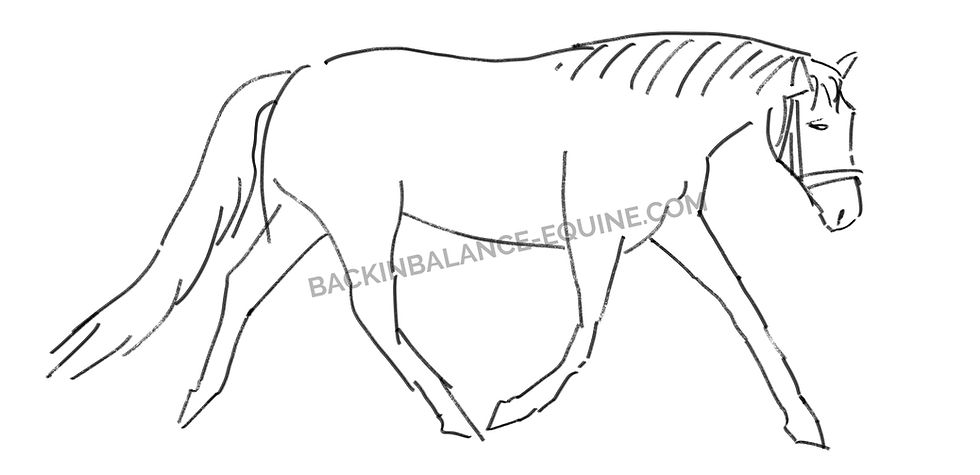The Hidden Science of Long and Low: Stretch-Mediated Hypertrophy Explained
- Academy Team
- Sep 3
- 3 min read

When it comes to building topline, horse owners often hear the phrase “ride your horse long and low, or as I like to say; forward, down and out.” But what does this really mean — and why does it work? The answer lies in a process known as stretch-mediated hypertrophy.
What is Stretch-Mediated Hypertrophy?
Stretch-mediated hypertrophy is the process where muscles grow stronger and thicker when they are worked in a lengthened position. In horses, this means encouraging the back and neck muscles to stay active while stretched, rather than compressed.
When your horse works in a forward, down and out posture (with the nose reaching forward and the neck lengthened), the topline muscles are loaded under stretch. Over time, this stimulates adaptation: stronger, more developed muscles along the neck, back, and hindquarters.
📖 Research in both humans and animals has demonstrated that eccentric and stretch-based muscle loading stimulates hypertrophy and structural strengthening (Maeo et al., 2018; Franchi et al., 2017).
The Role of the Nuchal and Supraspinous Ligament
The topline is not supported by muscle alone — it also relies on the ligament system.
Nuchal ligament: runs from the poll to the withers and helps carry the weight of the head and neck.
Supraspinous ligament: continues from the withers down the back along the tops of the vertebrae, acting like a “support band” to stabilise the spine.
While these ligaments are vital for conserving energy and stabilising movement, they can also reduce muscle activity if over-relied upon.
If the head and neck are carried too low, the nuchal ligament takes much of the load, and the topline muscles disengage.
Similarly, the supraspinous ligament helps prevent the back from collapsing, but when it carries too much of the strain, the longissimus dorsi and other back muscles are less active.
📖 Rhodin et al. (2005, 2009) demonstrated that head-and-neck position significantly affects back movement and muscle activity. Extreme low-neck positions reduce muscular activation, while moderate forward-down stretching encourages back lift and engagement.
Practical Application for Building Topline
To make the most of stretch-mediated hypertrophy in your training:
Encourage forward energy — ride from the hindquarters into a light contact.
Seek the forward, down, and out stretch — the horse should lengthen the neck without collapsing at the base.
Avoid over-stretching — keep the nose in front of the vertical and the poll not lower than the chest.
Engage the back — aim for a lifted, swinging back rather than one passively stabilised by the supraspinous ligament.
Use variation — alternate stretching with collected work, poles, hills and transitions to keep muscles adapting.
In-hand work — can be very effective if done correctly, encouraging the same posture without a rider’s weight.
Ensure you use true 'long and low' at times to give your horse a break and chance to recover.
Rest and Recover - muscles grown during rest so ensure your horse has adequate recovery time between sessions
The Takeaway
Stretch-mediated hypertrophy is a natural, effective way to build your horse’s topline — but it only works when the muscles are engaged, not when the ligaments are carrying all the load. By riding or working your horse in a balanced, forward, down and out posture you harness the body’s own adaptation process to develop strength, suppleness and long-term soundness.
👉 Book a Back in Balance session today to learn how manual therapy, rehabilitation planning, and correct training techniques can support topline development in your horse.

%20(1).png)



Comments